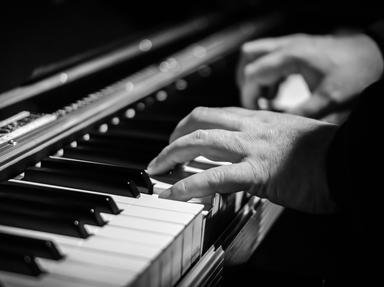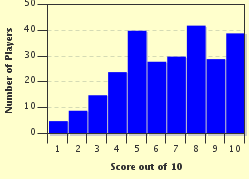Quiz Answer Key and Fun Facts
1. The very first electric organ was the Telharmonium, a behemoth of an instrument installed in New York City in 1897. What did it do that no live performing instrument before it had done?
2. The Telharmonium and the earliest Hammond organs used an electromechanical device called the tonewheel to generate the needed frequencies. What was used to pick up sounds from the early tonewheels?
3. The next step from the tonewheel was to generate the frequencies through electronic oscillators. What key component was at the heart of the first oscillators used in electronic organs?
4. Early oscillator organs could not compete with the tonewheel models due to their complexity and sheer number of oscillators and modifying circuits needed. This was to change even before the transistor era due to the development of a new component that used transformers - passive components not needing tubes - to derive most of the frequencies needed. What was the name of these components, still used in those modern organs that incorporate some analog voices?
5. Beginning in the 1950s, electronic organ manufacturers added playing aids to their products, allowing even a relative beginner to deliver a decent performance. Borrowing from the accordion, which feature was the first common playing aid?
6. While never a leader in terms of sales volumes, the home organ company Gulbransen was nonetheless one of the most innovative. In 1957, its Model B was the first of a new generation of electronic organs due to which feature?
7. Most bands today employ at least one keyboard player to benefit from the wide variety of sounds possible in electronic instruments. The first keyboard-style organs, using a single manual, no pedals and an easily portable case became popular in the 1960s under which name?
8. Beginning in the early 1970s, the first digital components appeared on the electronic organ market and by the early 1980s, most consumer-level organs incorporated at least some level of digital sound generation based on sampled natural sounds. What was the greatest technical limitation to these early systems that kept their sound quality relatively low for a substantial period of time?
9. While internationally, electronic organ soloists often played on Yamaha or Roland instruments, during the mid-1980s boom of electronic home organs and organ entertainers in Central Europe, a German manufacturer named Wersi had a product lineup ranging all the way from children's instruments to state of the art stage instruments. During the early days of Wersi, their products had a unique feature making them very interesting for some hobbyists, namely what?
10. After 115 years of history, the electronic organ as a standalone musical instrument is a dying species. Today, you are increasingly able to buy complete high quality assemblies of manuals, pedals, stops and all the needed command buttons but without any actual musical hardware. What other device do you need to use one of these "organ shells"?
Source: Author
WesleyCrusher
This quiz was reviewed by FunTrivia editor
ertrum before going online.
Any errors found in FunTrivia content are routinely corrected through our feedback system.

